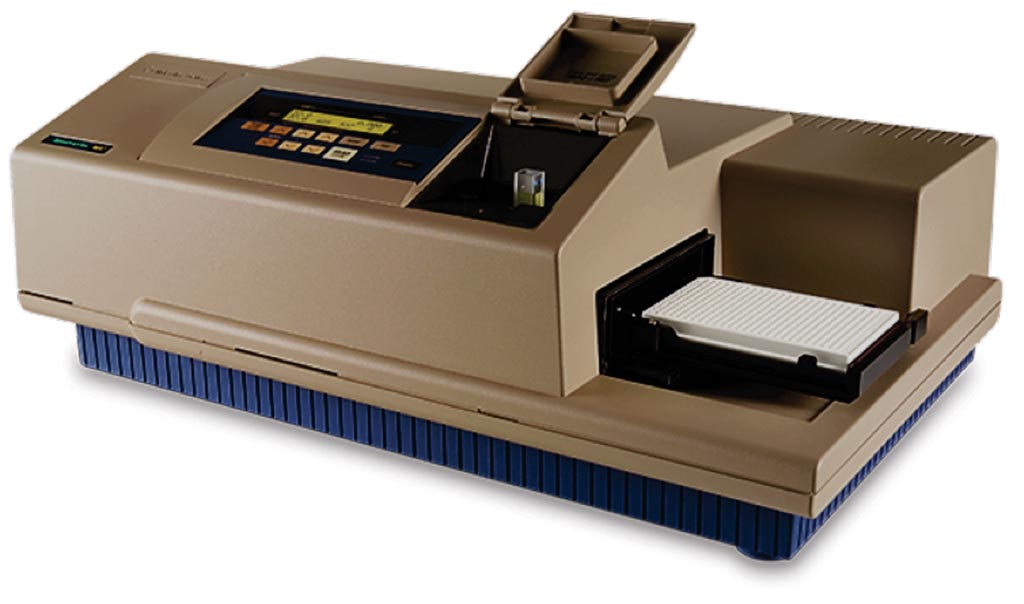Seropositivity Thresholds Defined for Use in Trachoma Elimination Studies
By LabMedica International staff writers
Posted on 01 Feb 2017
Trachoma is caused by ocular infection with the bacterium Chlamydia trachomatis and it is the leading infectious cause of blindness worldwide. It is estimated that over 200 million people in 42 countries are at risk from trachoma blindness.Posted on 01 Feb 2017
Individuals who have previously been infected with C. trachomatis carry specific antibodies in their blood. Recent studies have suggested that these antibodies may be a good way to estimate the intensity of transmission of this bacterium in a population. Among people who do have antibodies (seropositives) there is variation in the amount that is detectable in their blood.

Image: The Spectramax M3 plate reader (Photo courtesy of Molecular Devices).
A team of scientists led by those at the London School of Hygiene and Tropical Medicine examined and diagnosed trachoma in different populations and collected dried blood spots 952 children aged 1 to 9 years in Laos and 2,700 in Uganda and from 1,868 people aged 1 to 90 years in The Gambia, in 2014. Dried blood spots (DBS) were tested for antibodies against the secreted C. trachomatis protein Pgp3 using enzyme-linked immunosorbent assays (ELISA). Optical density of the ELISAs was read at 450 nm (OD450) on a Spectramax M3 plate reader.
The authors of the study estimated seroprevalence at 11.3% (Laos), 13.4% (Uganda) and 29.3% (The Gambia) by visual inspection of the inflection point. The expectation-maximization algorithm estimated seroprevalence at 10.4% (Laos), 24.3% (Uganda) and 29.3% (The Gambia). Finite mixture model estimates were 15.6% (Laos), 17.1% (Uganda) and 26.2% (The Gambia). Receiver operating characteristic (ROC) curve analysis using a threshold calibrated against external reference specimens estimated the seroprevalence at 6.7% (Laos), 6.8% (Uganda) and 20.9% (The Gambia) when the threshold was set to optimize Youden’s J index. The ROC curve analysis was found to estimate seroprevalence at lower levels than estimates based on thresholds established using internal reference data. Thresholds defined using internal reference threshold methods did not vary substantially between population samples.
The authors concluded that internally calibrated approaches to threshold specification are reproducible and consistent and thus have advantages over methods that require external calibrators. They propose that future serological analyses in trachoma use a finite mixture model or expectation-maximization algorithm as a means of setting the threshold for ELISA data. This will facilitate standardization and harmonization between studies and eliminate the need to establish and maintain a global calibration standard. The study was published on January 18, 2017, in the journal Public Library of Science Neglected Tropical Diseases.













